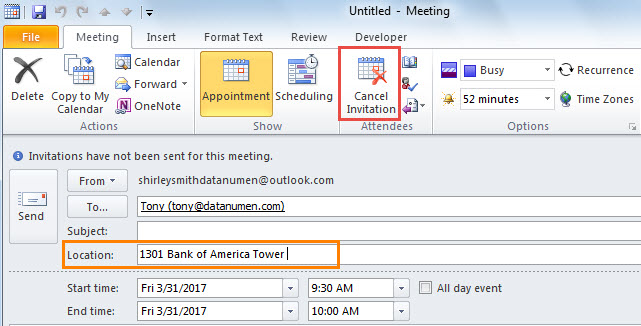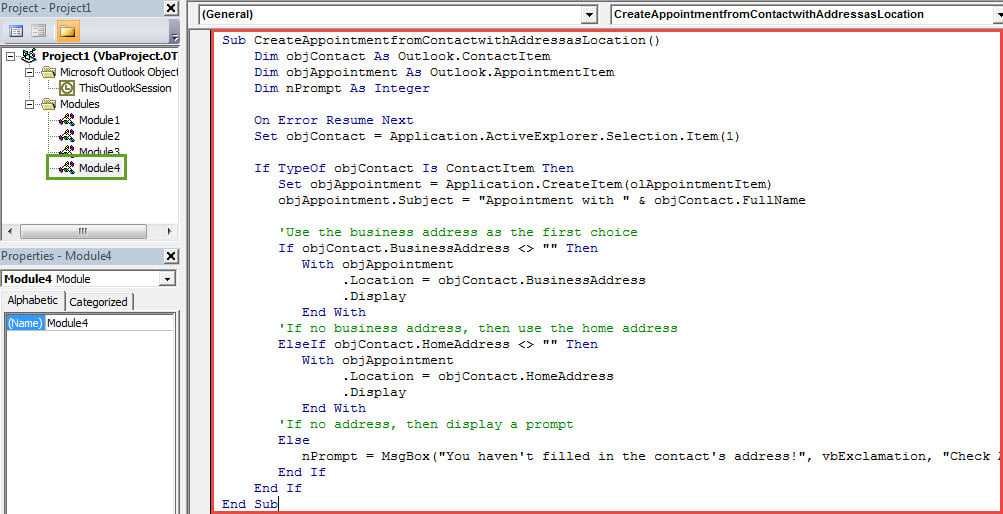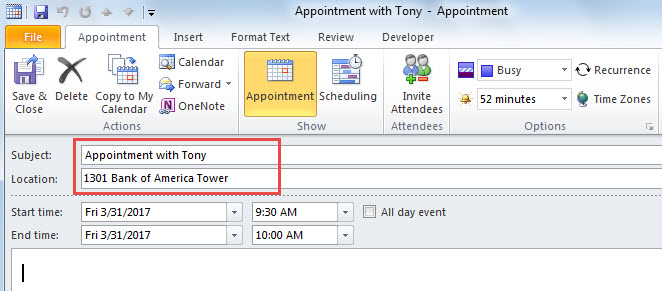If you want to create an appointment from a specific contact and use the contact address directly as the appointment location. In this case, you can apply the 2 ways introduced in this article.
Sometimes, you may need to schedule an appointment with someone, who is a contact in your Outlook, and use the contact address as the appointment location straightly, business address or home address. For most people, the most familiar method is to manually create an appointment and copy the contact address to the location field. However, actually, by means of Outlook VBA, you can quickly get it via one click. Now we will introduce the two ways respectively.

Method 1: Copy the Contact Address to a New Appointment Manually
- In the first place, launch your Outlook application.
- Then switch to Contacts pane.
- Next double click on the source contact to open it in its own window.
- Subsequently, you should find the “Address” section and copy the address.

- After that, you can click on the “Meeting” button in the “Communicate” group under “Contact” tab.

- Later, a meeting will show up. Now you can click into the “Location” field and press “Ctrl + V” to paste the previously copied address.
- Finally, to turn a meeting to a standard appointment, you can just hit “Cancel Invitation” button.

Method 2: Use Outlook VBA to Accomplish It in Quick Time
- At the very outset, press “Alt + F11” key shortcut.
- Then in the opened VBA editor window, you can open a not-in-use module.
- Next copy and paste the following VBA codes into it.
Sub CreateAppointmentLocatedAtContactAddress()
Dim objContact As Outlook.ContactItem
Dim objAppointment As Outlook.AppointmentItem
Dim nPrompt As Integer
On Error Resume Next
Set objContact = Application.ActiveExplorer.Selection.Item(1)
If TypeOf objContact Is ContactItem Then
Set objAppointment = Application.CreateItem(olAppointmentItem)
objAppointment.Subject = "Appointment with " & objContact.FullName
'Use the business address as the first choice
If objContact.BusinessAddress <> "" Then
With objAppointment
.Location = objContact.BusinessAddress
.Display
End With
'If no business address, then use the home address
ElseIf objContact.HomeAddress <> "" Then
With objAppointment
.Location = objContact.HomeAddress
.Display
End With
'If no address, then display a prompt
Else
nPrompt = MsgBox("You haven't filled in the contact's address!", vbExclamation, "Check Address")
End If
End If
End Sub

- After that, add the macro to Quick Access Toolbar as usual.
- Eventually, you can have a try.
- First, select a contact.
- Then click on the macro button in Quick Access Toolbar.
- At once, a new appointment will display with the contact address as the location, like the following screenshot:

Effectively Resolve Outlook Problems
In order to get rid of Outlook issues efficiently, it is suggested to prepare a robust Outlook fix tool in advance, such as DataNumen Outlook Repair. Otherwise, if you simply reply on the inbox repair tool, Scanpst.exe, you will finally find it useless in case of severe Outlook crashes. Moreover, it is much better if you’ve developed a good habit of making regular data backups.
Author Introduction:
Shirley Zhang is a data recovery expert in DataNumen, Inc., which is the world leader in data recovery technologies, including repair sql and outlook repair software products. For more information visit www.datanumen.com
